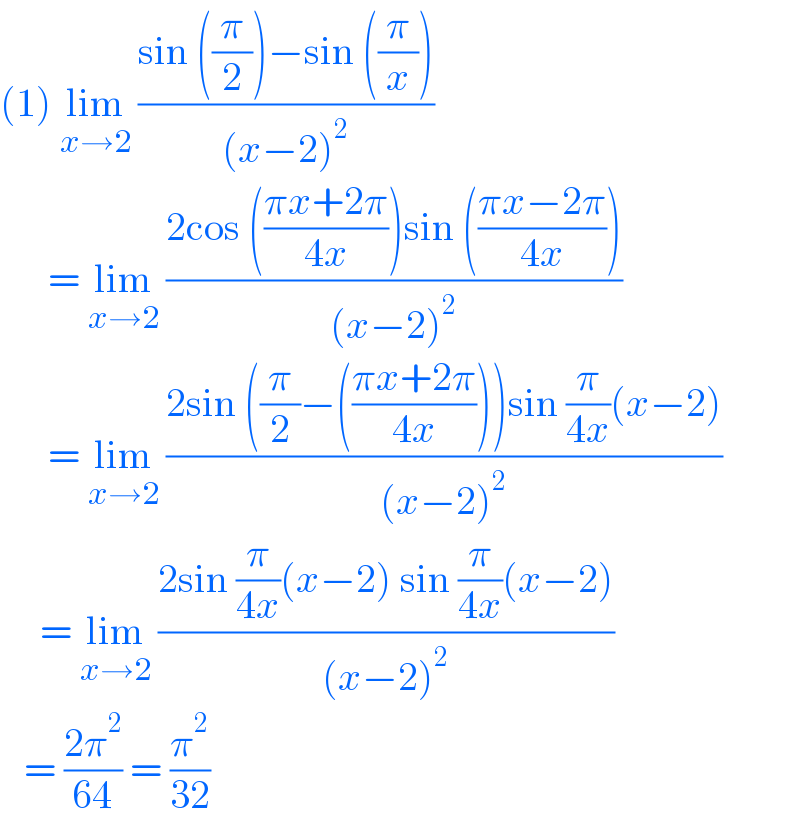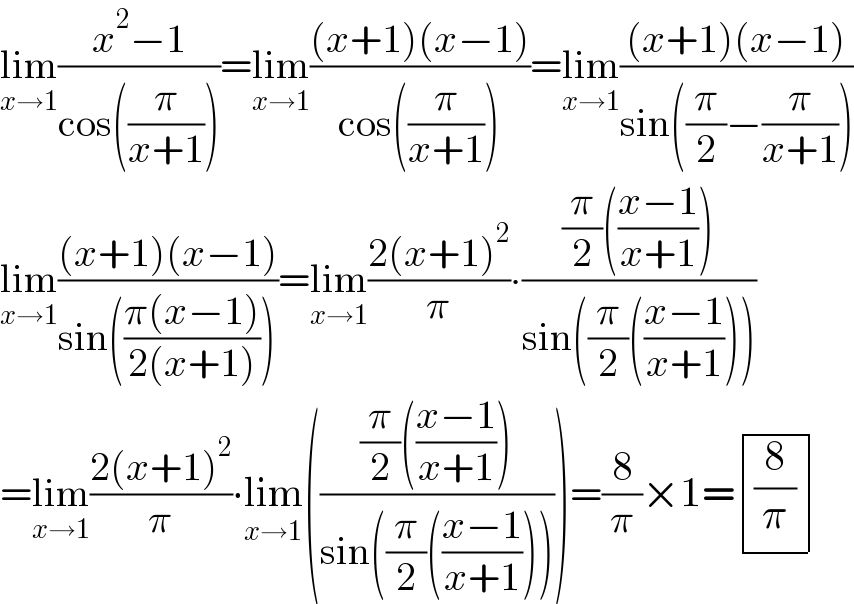
Question and Answers Forum
Question Number 161583 by cortano last updated on 19/Dec/21

Commented by blackmamba last updated on 20/Dec/21

Answered by Ar Brandon last updated on 20/Dec/21

Answered by Ar Brandon last updated on 20/Dec/21

Answered by mathmax by abdo last updated on 20/Dec/21

